Welcome to our culinary tour of the 10 most popular food in Japan!
In this journey, we’ll dive into the diverse and delicious world of Japanese cuisine, from the bustling street stalls of Tokyo to the serene tea houses of Kyoto.
Each dish we explore is a staple in Japanese dining and holds a special place in the hearts of locals and travelers alike.
From Ramen’s savory depths to Matcha’s refined simplicity, join us as we uncover why these dishes are not just food but a vital part of Japan’s cultural identity.
Whether you’re a seasoned foodie or a curious newcomer, prepare to tantalize your taste buds with Japan’s most beloved flavors!
- Recommended BEST Tours in Japan (FREE Cancellation)
- Recommended BEST Tours in Tokyo
- Recommended BEST Tours in Osaka
- Recommended BEST Tours in Kyoto
- Recommended Tokyo Hotels
- Recommended Osaka Hotels
- Recommended Kyoto Hotels
- Cheap Flights, Airline Tickets & Plane Tickets (TRIP.COM)
Number 10: Takoyaki.
Starting our countdown at number 10 is Takoyaki, the quintessential Osaka street food that has captured the hearts of locals and tourists alike. These delectable doughy balls, crispy on the outside and gooey on the inside, are made from a wheat flour-based batter and cooked in a specially molded pan to achieve their perfect round shape. Each ball is filled with tender pieces of octopus, which offer a delightful contrast in texture to the soft, savory batter.
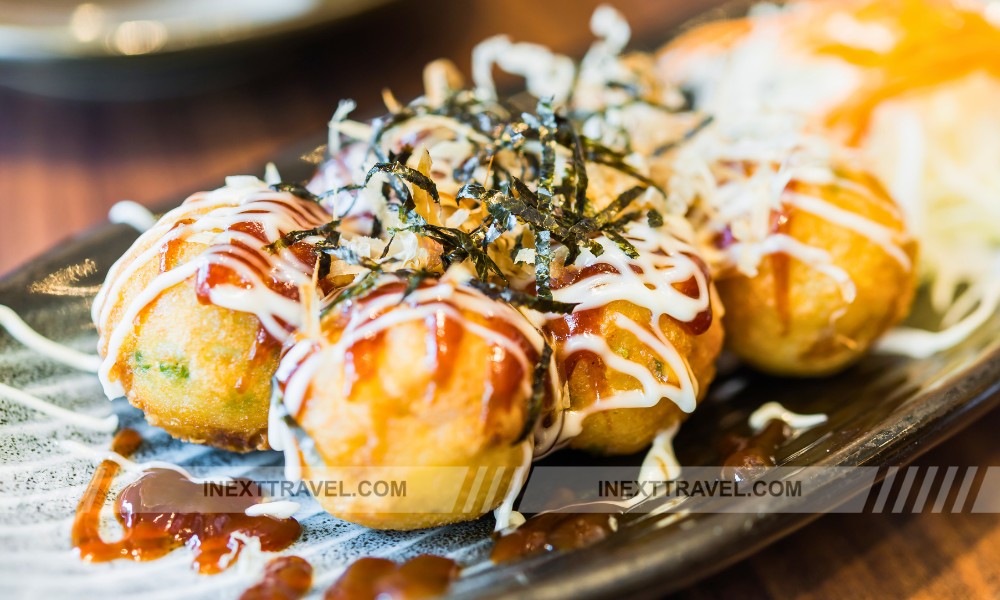
Making Tataki involves skillful turning with a pick to ensure even cooking and a perfect spherical shape. Once cooked, the Tataki is brushed with a sweet and savory Tataki sauce, similar in flavor to Worcestershire sauce but thicker and sweeter.
They are then drizzled with creamy mayonnaise, adding a rich flavor that complements the sauce’s tanginess. A sprinkle of green onions adds a fresh, sharp bite, while delicate flakes of bonito, or dried fish, dance on top, reacting to the heat with a mesmerizing wave-like motion.
Takoyaki isn’t just food; it’s an experience. Often served piping hot from stall vendors in bustling yatai food markets or at specialty restaurants, eating Takoyaki allows diners to engage directly with Japan’s vibrant street food culture. The dish is commonly enjoyed with friends and often paired with a cold beer, making it a popular choice at festivals and casual gatherings.
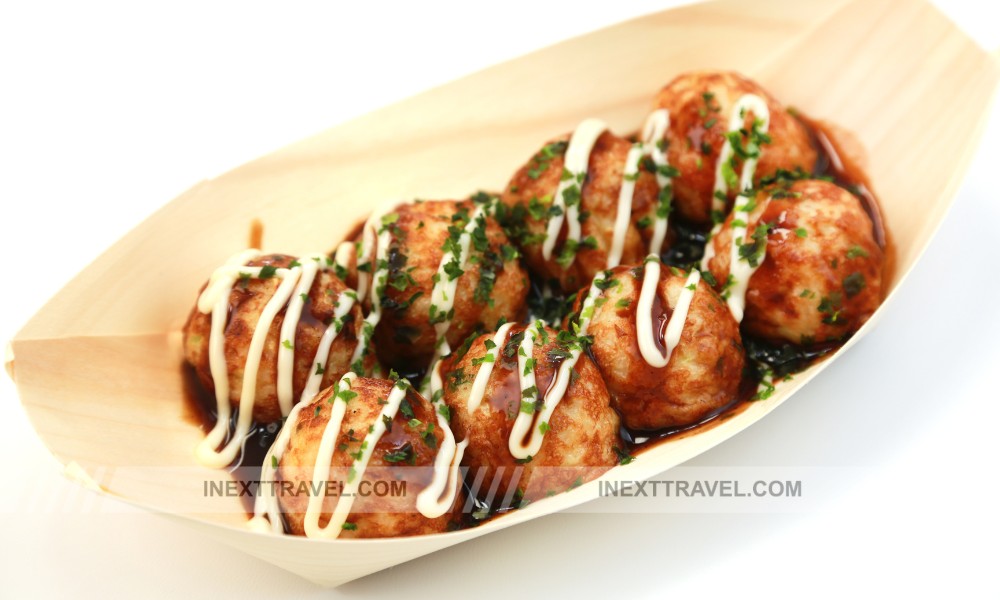
For food lovers visiting Japan, trying Takoyaki is more than just tasting a local delicacy; it’s about experiencing a piece of Osaka’s culinary soul. This dish embodies the spirit of Japanese street food—quick, flavorful, and crafted with care.
Whether you grab them on the go or sit down to watch a skilled chef prepare them before your eyes, Takoyaki offers a taste of Japanese tradition that is as enjoyable as it is iconic.
Number 9: Ramen.
At number 9, we celebrate Ramen, a dish that transcends simple nourishment to become Japan’s soul food, deeply embedded in the nation’s culinary identity. Originating from China, ramen was adapted into Japanese cuisine, where it evolved into various rich flavors and styles, reflecting the diversity of Japan’s regions and their unique traditions.
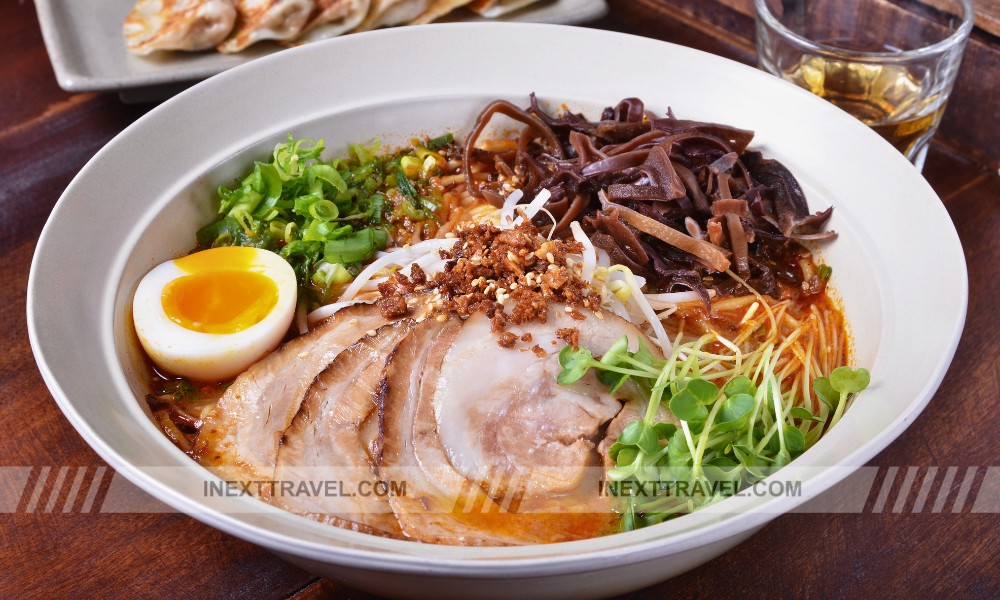
Each type of ramen is distinguished by its broth, noodles, and toppings. The broth, often simmered for hours to achieve its deep flavors, comes in several main varieties: Shoyu (soy sauce), Miso, Shio (salt), and Tonkotsu (pork bone).
For instance, Tonkotsu ramen from Kyushu features a creamy, rich, and intensely savory broth derived from pork bones boiled until they dissolve into a hearty, milky soup. Conversely, the preferred style in Hokkaido is Miso ramen, which incorporates miso paste into the broth for a robust, nutty flavor that matches the cold northern climate.
The noodles in ramen can vary in thickness and texture, tailored to complement the broth’s character—thin and straight for delicate broths or thick and wavy for heartier ones.
Toppings add further complexity and vary widely by region; common additions include slices of pork (chashu), boiled eggs (ajitama), bamboo shoots (menma), green onions, seaweed (nori), and corn.
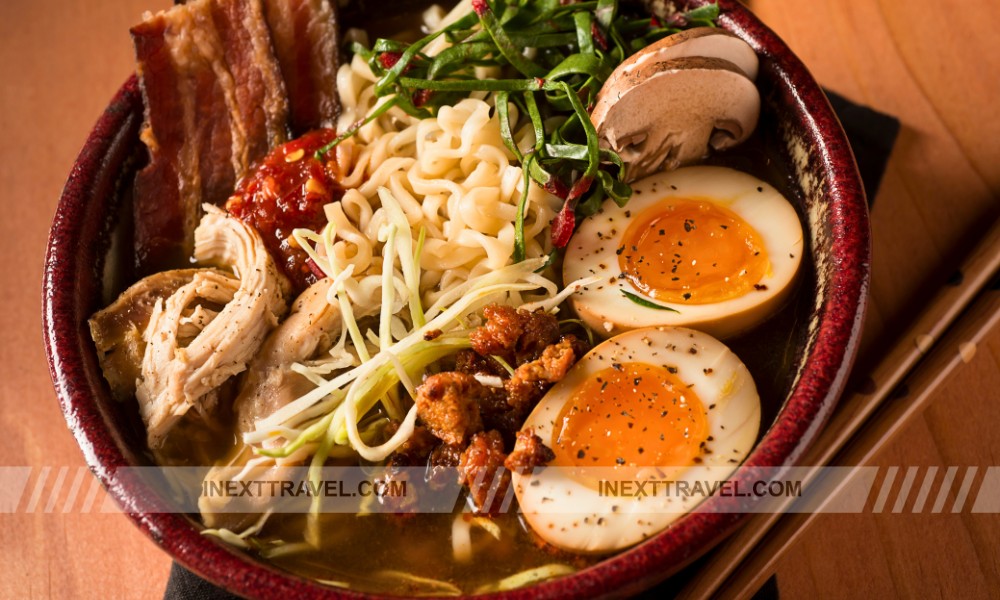
Ramen’s ubiquitous presence in Japan, from tiny, tucked-away noodle bars in back alleys of Tokyo to gourmet restaurants and even instant ramen packets in homes, underscores its significance in Japanese food culture. The dish is a staple for quick meals and a canvas for culinary artistry and regional expression.
Each bowl of ramen tells a story of regional ingredients, climate, and culinary preferences, making it a must-try for anyone seeking to delve into Japan’s rich food heritage. As much comfort food as a gourmet delight, ramen offers an inviting, warming meal that has captured hearts worldwide. It embodies the soul of Japanese cuisine in each slurp-worthy sip and bite.
Number 8: Tempura.
At number 8, we delve into Tempura, a quintessentially Japanese dish that combines simplicity and elegance. Originating from the Portuguese introduction of frying food in the 16th century, the Japanese adopted and refined tempura into a culinary art form that showcases the natural flavors of its ingredients through a delicate cooking process.
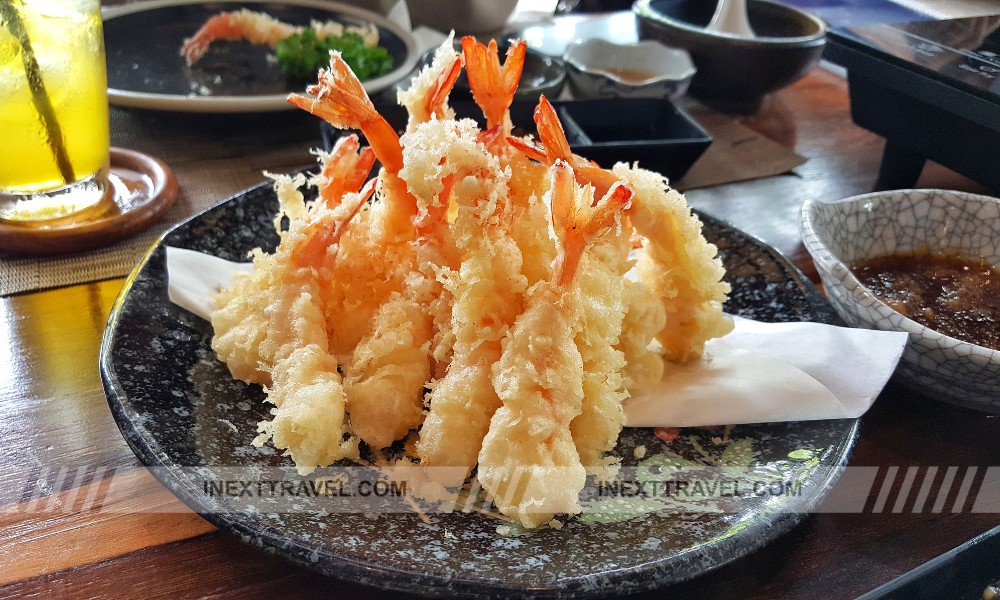
Tempura consists primarily of seafood and vegetables; each piece is lightly dipped in a cold, thin batter made from soft wheat flour, egg, and ice water. The key to its light, airy texture is the minimal mixing of the batter, which ensures it remains lumpy and retains cold pockets of liquid. This results in an incredibly crisp and fluffy coating when fried, contrasting beautifully with the tender, juicy interior of the fresh ingredients.
Typical tempura ingredients include shrimp, squid, sweet potato, bell pepper, green beans, and eggplant. These ingredients are quickly deep-fried in hot oil—usually sesame or canola—to achieve a golden, crunchy exterior without absorbing excess oil. The chef’s skill is paramount in maintaining the correct oil temperature and frying time to prevent sogginess and achieve perfect crispness.
Tempura is typically served hot from the fryer to preserve its textural integrity. It can be enjoyed in several ways: as a standalone dish with a side of tentsuyu (a dipping sauce made from dashi broth, mirin, and soy sauce), sprinkled with sea salt to enhance the natural flavors of the ingredients, or served over a bowl of steamed rice or udon noodles as “Tempura Donburi” or “Tempura Udon” respectively.

The contrast between the light, crisp batter and the soft, flavorful core of the ingredients makes tempura a delightful eating experience. Its versatility and the ability to bring out the subtle flavors of the ingredients make Tempura a favorite among Japanese cuisine enthusiasts.
As a dish that balances simplicity with sophistication, tempura not only satisfies the palate but also captures the essence of Japanese culinary philosophy: enhancing and celebrating the intrinsic flavors of food.
Number 7: Sushi.
Coming in at number 7 is Sushi, arguably one of Japan’s most iconic culinary exports and a cornerstone of Japanese cuisine. This delectable dish is more than just food; it is an art form that balances simplicity with complexity and tradition with innovation.
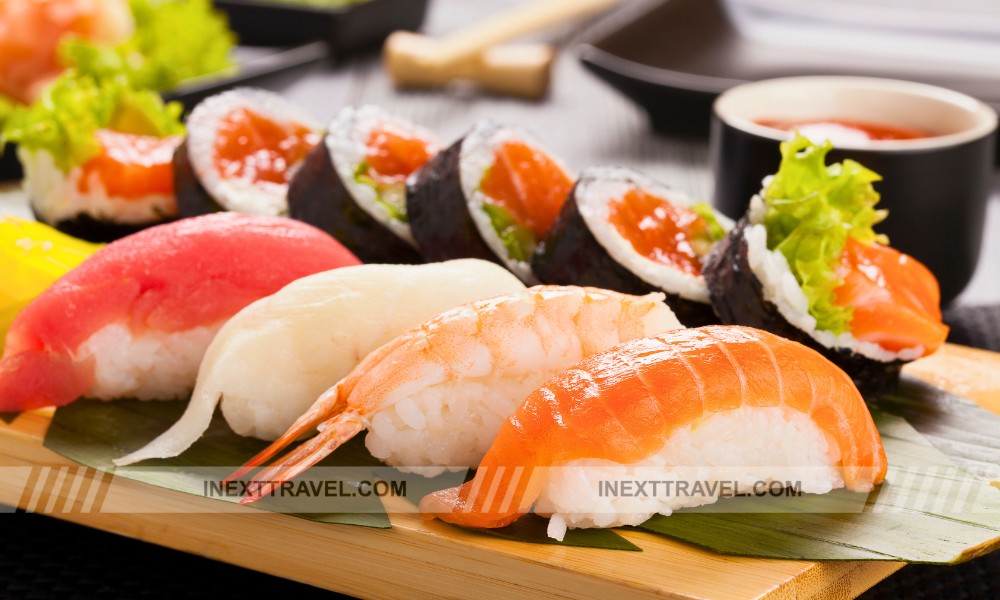
Sushi consists of vinegared rice paired with various ingredients, most commonly seafood, which may be served raw, cooked, or marinated. The subtle flavors are often enhanced with additions like nori (seaweed), wasabi, and pickled ginger.
Sushi comes in numerous styles and forms, reflecting the diversity and creativity of sushi chefs across Japan and around the world. Nigiri sushi, featuring hand-pressed rice topped with slices of fish, is one of the most traditional forms, highlighting the freshness and quality of the seafood.
Maki sushi, or sushi rolls, encase ingredients in rice and seaweed. They range from simple cucumber rolls to elaborate creations with multiple fillings and toppings. Sashimi, although not technically sushi since it does not include rice, often accompanies sushi dishes and features impeccably sliced raw fish and seafood.
Sushi preparation is considered an art and a craft that requires years of training to perfect. Each step is executed with care and attention to detail, from the precise cutting of fish to the correct rice temperature. The best sushi chefs are revered for their technical skills, understanding of the ingredients, and ability to balance flavors and textures.
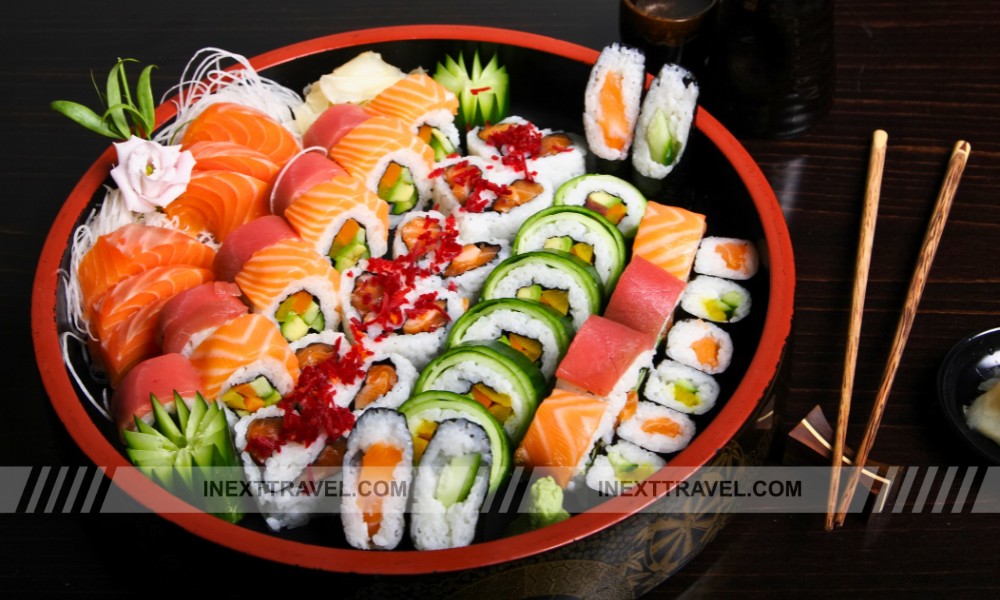
Sushi’s appeal lies in its versatility and the endless variety it offers. Whether it’s the luxurious indulgence of a fatty tuna belly or the crisp freshness of a simple vegetable roll, sushi caters to a wide range of tastes and preferences. It can be enjoyed in a humble roadside shop in Tokyo, a bustling conveyor belt restaurant, or a high-end establishment where each piece is crafted as a miniature work of art.
Beyond its taste and aesthetic appeal, sushi offers a cultural experience that embodies the Japanese ethos of harmony, respect, and minimalism. Especially in Japan, eating sushi allows diners to engage with an ancient and enduringly modern tradition. For many, eating sushi is a moment to appreciate the beauty in simplicity and the skills of dedicated artisans.
Number 6: Onigiri.
At number 6 is Onigiri, a quintessential Japanese food that exemplifies the beauty of simplicity in the nation’s cuisine. These humble rice balls, often shaped by hand into triangular or spherical forms, are a staple in Japanese diets, offering a nourishing and convenient option for a quick snack or a wholesome meal on the go.
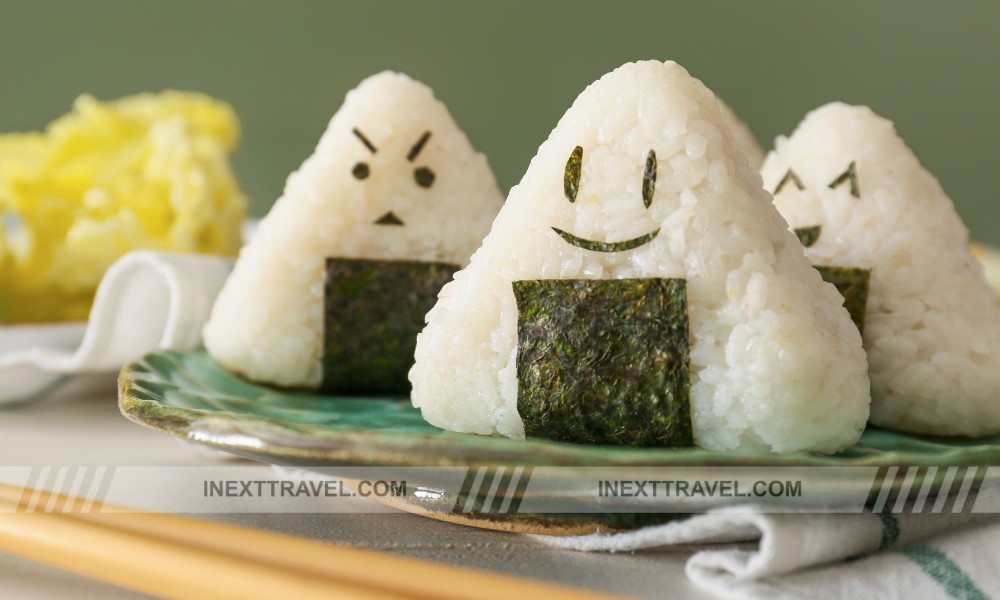
The essence of onigiri lies in its minimalism and versatility. Made from plain rice, often seasoned with a bit of salt and occasionally mixed with furikake (a flavorful Japanese seasoning), onigiri is typically filled with various savory ingredients.
Some of the most popular fillings include umeboshi (pickled plum), known for its sour and salty taste that contrasts beautifully with the subtle sweetness of the rice; flakes of salted salmon, which provide a satisfying richness; and kombu or nori seaweed, which adds a deep umami flavor.
Onigiri is a food item and a cultural icon deeply embedded in Japanese culinary traditions. It is commonly wrapped in nori, which provides flavor and texture and makes it easier to hold and eat without sticking to the fingers. This wrapping technique is practical and aesthetic, showcasing the Japanese attention to detail and presentation.
Beyond its basic form, onigiri is a canvas for creativity, allowing for countless variations and regional specialties. Some might include elaborate fillings like tuna mayo or spicy cod roe, while others are shaped or decorated to resemble animals or flowers, particularly in children’s bento boxes.
Onigiri’s popularity extends beyond home kitchens to convenience stores across Japan, where it is a staple item loved for its freshness and handmade quality. Each onigiri is often individually wrapped and ready to eat, making it a perfect choice for picnics, travel, or a quick lunch.
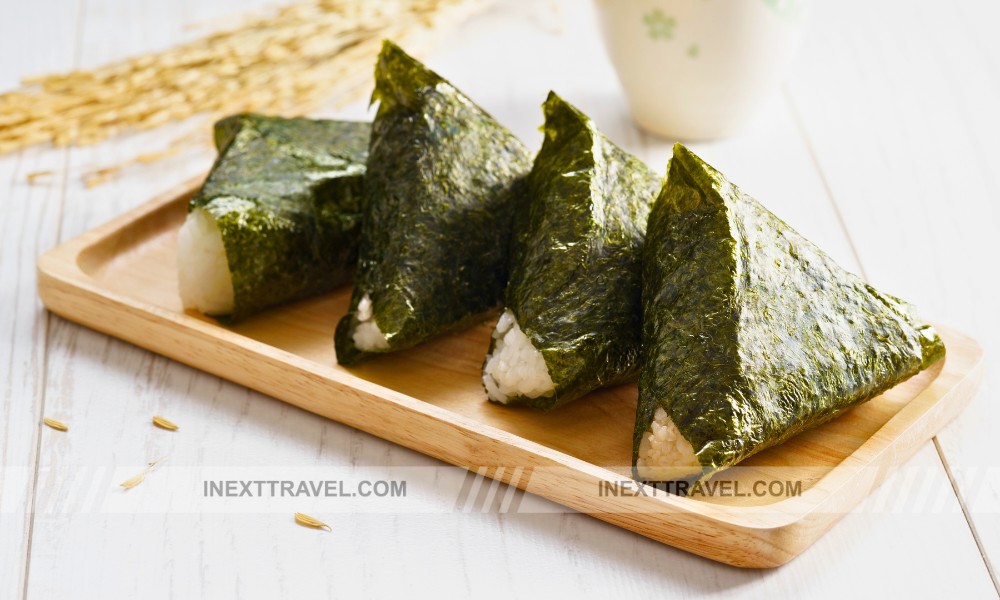
The cultural significance of onigiri also shines through in its frequent appearances in Japanese literature, anime, and film, where it is often depicted as a comforting reminder of home or a symbol of maternal care. It embodies the Japanese principle of “mottainai,” or no waste, as it effectively utilizes leftover rice, turning a simple ingredient into a delightful and satisfying meal.
Overall, onigiri represents the soul of Japanese comfort food—unpretentious, satisfying, and deeply ingrained in people’s daily lives and culture. Whether enjoyed simply with a sprinkle of salt or filled with gourmet ingredients, onigiri remains a beloved classic cherished across generations.
Number 5: Curry Rice.
At number 5, we find Curry Rice, a dish woven into the fabric of Japanese cuisine and culture, standing as a beloved comfort food enjoyed by millions across the nation. Introduced to Japan by the British during the Meiji era, curry has since undergone a unique evolution. It has transformed into a distinctly Japanese dish characterized by its thick, savory gravy and harmony of sweet and spicy flavors.

Japanese Curry Rice, or “Kare Raisu,” is typically milder and sweeter than the curries in other parts of Asia, tailored to local palates. It is made by simmering various ingredients such as onions, carrots, potatoes, and sometimes apples or honey, contributing to its sweetness. The meat can vary from beef, pork, chicken, or seafood, making the dish versatile and appealing.
The curry sauce is thickened with flour and infused with a proprietary blend of spices that often includes turmeric, coriander, cumin, and fenugreek. This rich sauce is then served piping hot over a bed of steamed Japanese rice, creating a satisfying and filling meal that is both simple and intensely flavorful.
Often accompanied by pickled vegetables such as fukujinzuke or rakkyo, which provide a tangy contrast to the sweetness of the curry, Curry Rice can also be garnished with toppings like a fried egg or cheese, adding another layer of comfort to the dish. In Japan, curry is so famous that it is a staple in homes, restaurants, and cafeterias across schools and offices, often forming an integral part of the weekly menu.
Curry Rice is more than just a meal; it’s a culinary experience that brings warmth and comfort to those who eat it. It’s a dish in nearly every dining setting, from casual curry houses and family restaurants to gourmet establishments where chefs add their upscale twists to the classic recipe.
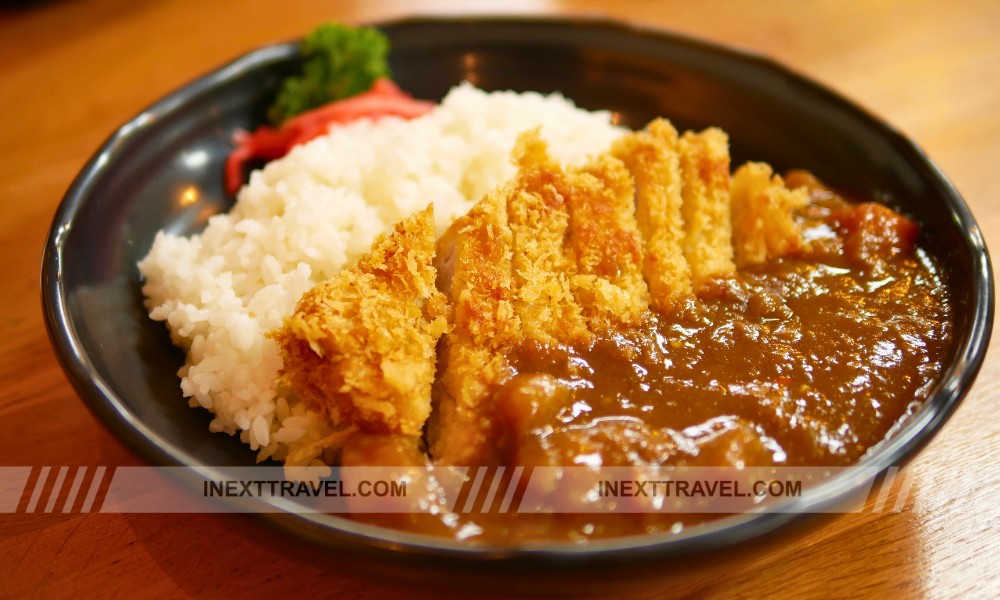
Additionally, the dish’s ability to be both a quick, casual meal and a lovingly prepared home-cooked dinner makes it a quintessential example of Japanese comfort food, beloved by people of all ages.
This hearty, soul-satisfying dish exemplifies how foreign influences can be embraced and adapted into local culinary traditions, becoming an integral part of the nation’s culinary identity. Whether enjoyed in a bustling city eatery or a quiet home kitchen, Curry Rice remains a fundamental and cherished part of Japanese cuisine.
Number 4: Okonomiyaki.
At number 4, we delve into the delicious world of Okonomiyaki, a versatile and beloved dish often referred to as a Japanese pancake. Okonomiyaki has gained nationwide popularity in Japan’s Kansai and Hiroshima regions due to its delightful mix of flavors and customizable nature. The name “okonomiyaki” literally means “as you like it grilled,” reflecting the dish’s adaptability to different tastes and ingredients.
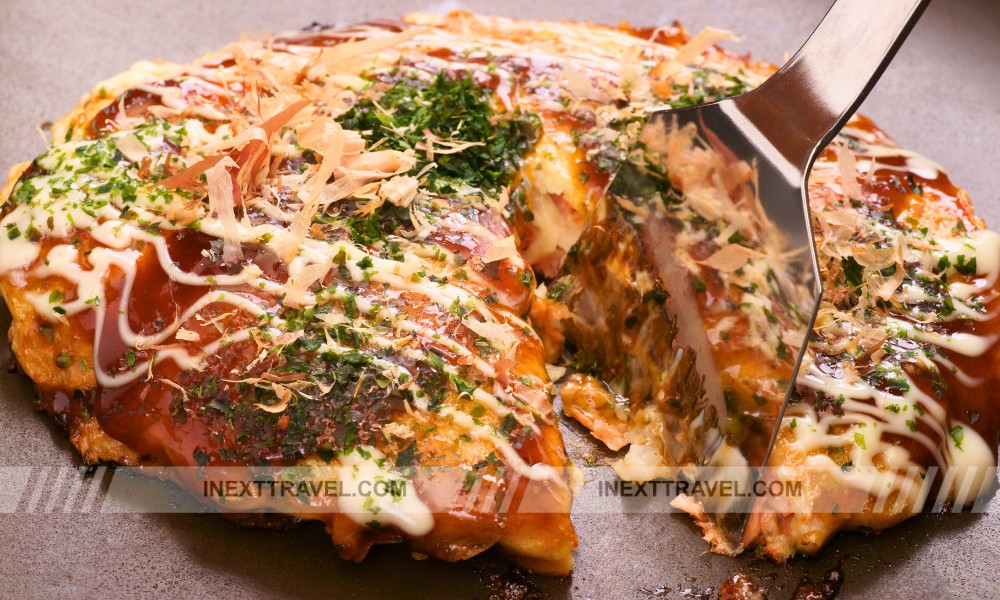
The basic batter for Okonomiyaki is made from flour, eggs, water, and shredded cabbage, creating a thick, savory mixture that serves as the foundation. Various other ingredients can be added according to personal preference, including but not limited to pork, octopus, squid, shrimp, vegetables, kimchi, and cheese slices. This flexibility allows for endless variations, making each okonomiyaki experience unique.
Once the batter is mixed with the chosen ingredients, it is poured onto a hot griddle and shaped into a thick, round pancake. The okonomiyaki is skillfully flipped as it cooks to ensure a golden-brown finish on both sides. The result is a delightful contrast of textures: crispy on the outside while remaining soft and hearty on the inside due to the abundance of cabbage and other fillings.
The dish is typically finished with a generous drizzle of a thick, sweet-savory sauce similar to Worcestershire sauce but explicitly tailored for okonomiyaki. It’s also commonly topped with mayonnaise, adding a creamy richness that complements the tangy sauce. A sprinkle of aonori (green seaweed flakes) and a handful of katsuobushi (bonito flakes) are often added on top. The heat from the pancake causes the thin slices of bonito to dance and wave, adding a dynamic visual flair to the dish.
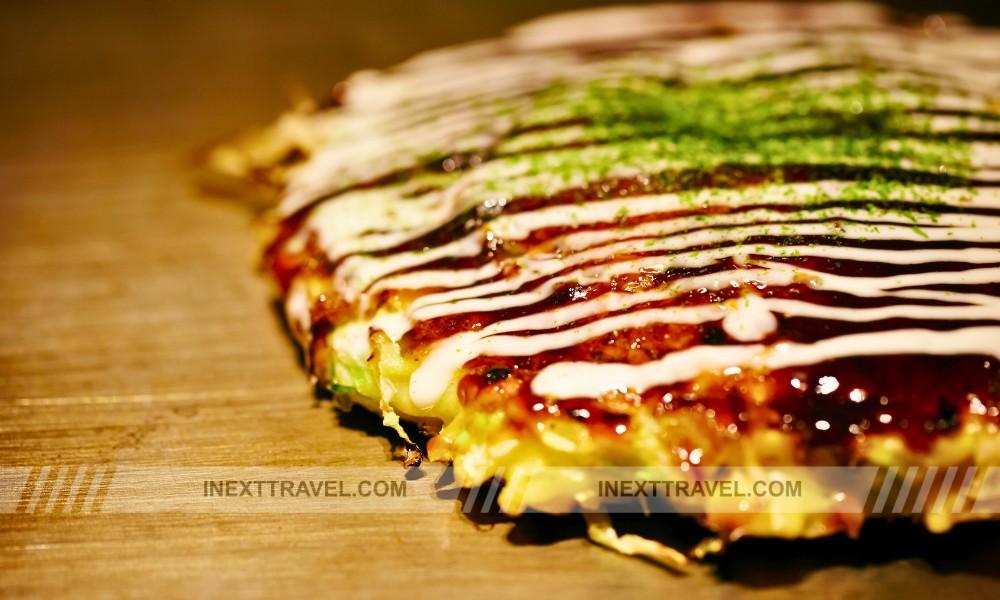
In restaurants specializing in this dish, okonomiyaki is often prepared at the diner’s table on built-in griddles. Diners can watch as their creation is cooked to perfection or even participate in the cooking process. This interactive aspect makes eating okonomiyaki a fun and communal dining experience, perfect for social gatherings.
Okonomiyaki is not just food but a culinary event celebrating Japanese ingenuity and communal eating. It embodies comfort and indulgence, offering a taste of Japan’s rich culinary diversity. Whether enjoyed in a bustling Osaka eatery or a small local restaurant, Okonomiyaki provides a filling, flavorful meal that satisfies the soul as much as the palate.
Number 3: Yakitori.
At number 3, we have Yakitori, a quintessential Japanese dish that transcends its simple description as grilled chicken skewers. A staple of izakaya menus—Japanese gastropubs—yakitori is not just a dish but a celebrated part of Japanese culinary culture, perfect for socializing and enjoying with a cold beer or sake.

Yakitori involves skewering various parts of the chicken—from the familiar, like thighs and breasts, to the more adventurous, like liver, heart, or even cartilage—and grilling them to perfection over a charcoal fire. This cooking method imparts a distinctive smoky flavor highly prized in yakitori.
The skewers are typically seasoned with salt or tare, a sweet and savory sauce made from mirin, sake, soy sauce, and sugar. The sauce caramelizes beautifully under the grill’s heat, adding an irresistibly rich, glossy finish.
The beauty of yakitori lies in its variety and the skill required to prepare each piece. The different cuts of chicken each have their unique texture and flavor, and yakitori chefs take great pride in their ability to bring out the best in each type, adjusting the cooking time and seasoning to suit the specific characteristics of the meat. This attention to detail ensures that each bite perfectly blends a crispy, charred exterior and a juicy, flavorful interior.
Yakitori is typically served in portions that encourage sharing, making it an ideal dish for casual dining and social gatherings. It’s common to find people gathered around small tables in izakayas, ordering skewer after skewer, each round a new flavor experience accompanied by lively conversation and drinks. This communal aspect of yakitori dining enhances the overall experience, embedding it deeply in the social fabric of Japan.
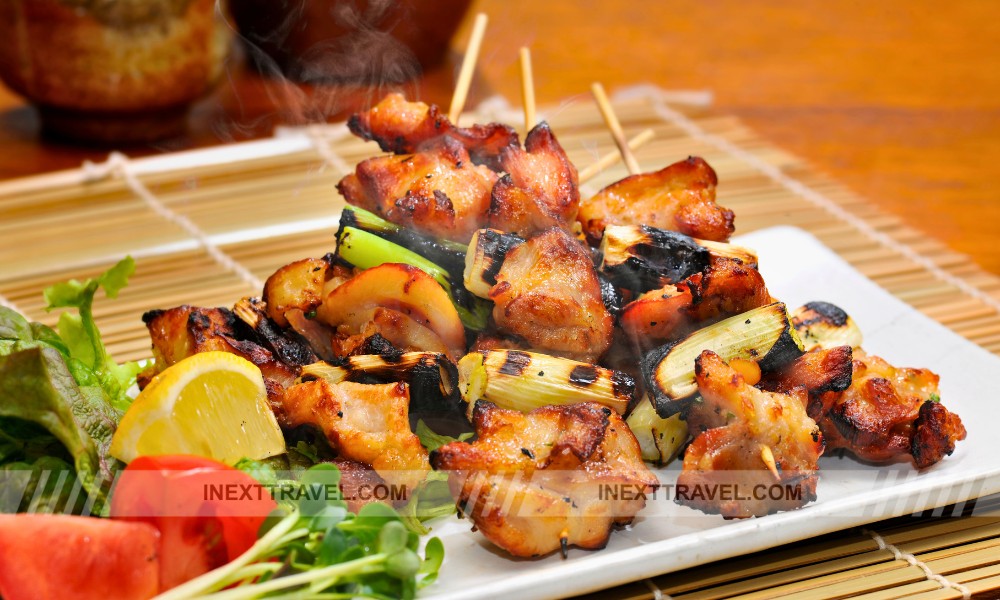
Moreover, yakitori bars often feature an open grill where diners can watch as their food is cooked, adding an element of entertainment and immediacy to the meal. The aroma of grilling chicken, the sizzle of the skewers, and the expert movements of the yakitori chef all contribute to an engaging and delicious dining experience.
In conclusion, yakitori offers far more than just a simple meal; it is a deep dive into the culture of Japanese dining, emphasizing both the enjoyment of food and the pleasure of company. Whether you’re a fan of classic chicken thighs or ready to explore the more decadent flavors of organ meats, yakitori provides a delicious and accessible entry into the diverse world of Japanese cuisine.
Number 2: Miso Soup.
At number 2, Miso Soup is a cornerstone of Japanese cuisine, a staple dish that exemplifies the essence of Japanese culinary traditions. It is an indispensable part of daily meals in Japan, typically served alongside rice and other main dishes, completing the balance of flavors in a traditional Japanese meal.
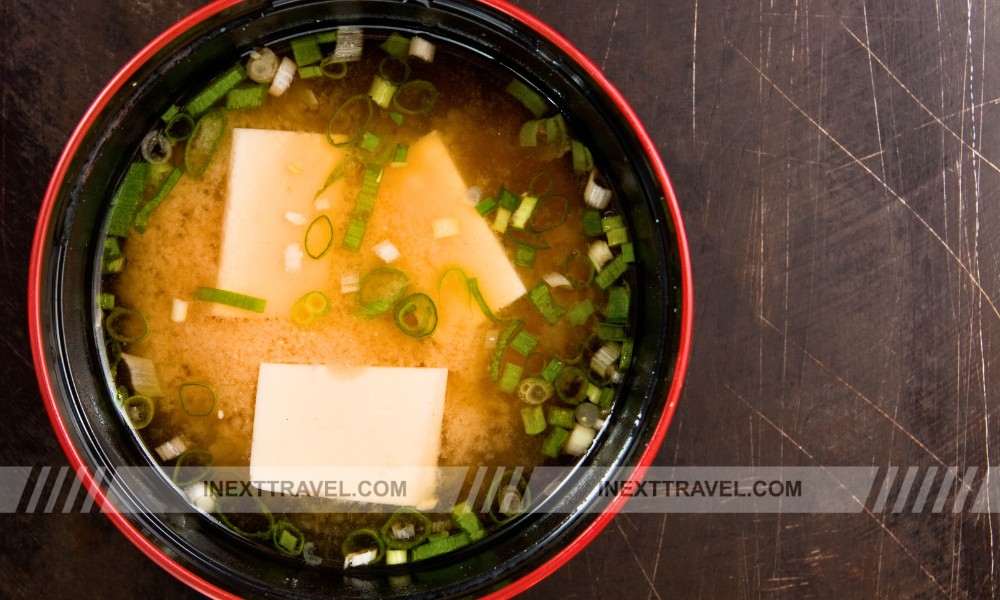
The fundamental ingredients of Miso Soup are miso paste—a fermented soybean paste that is a culinary staple in Japan—and dashi, a broth made from kelp and bonito flakes. This combination produces a richly flavored soup that is both nourishing and full of umami, the savory taste that is one of the hallmarks of Japanese cuisine. Miso paste comes in several varieties, including white (Shiro), red (aka), and mixed (awase), each imparting different flavors and levels of saltiness to the soup.
Miso Soup is celebrated for its comforting warmth and depth of flavor, which can be enhanced with various other ingredients. Common additions include tofu, which adds a soft texture and protein; wakame seaweed, which contributes a mild, sea-infused taste; and green onions, which provide a slight crunch and sharpness. This versatility allows Miso Soup to be adapted to different seasons and regional preferences, with ingredients such as mushrooms, potatoes, radish, and clams popular in various versions across Japan.
Beyond its delicious taste, Miso Soup holds a place in the Japanese diet for its health benefits. Miso is rich in vitamins and minerals and is believed to promote digestive health due to its fermentative properties. The ingredients typically used in Miso Soup are also associated with various health benefits, making the dish not only a comforting choice but a healthful one.
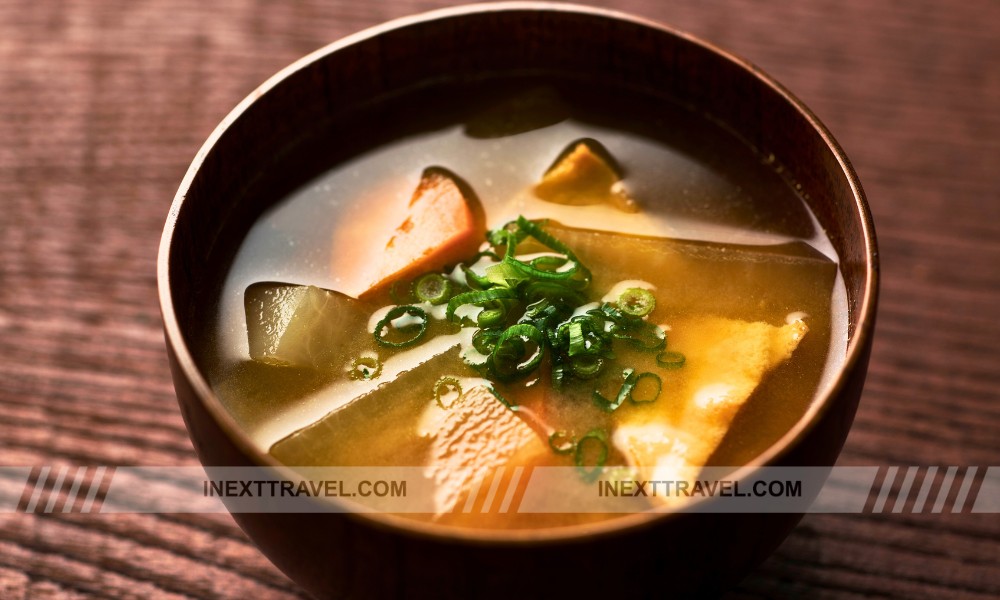
In Japanese culture, Miso Soup is more than just food; it is a daily ritual that brings comfort and nutrition. It is often one of the first cooking skills that people learn, and it plays an essential role in family meals, formal dining, and even in the simplest of breakfasts. The preparation of Miso Soup, with its minimal ingredients and quick cooking time, underscores the Japanese culinary principle of simplicity and the preservation of inherent flavors.
In conclusion, Miso Soup’s enduring presence in Japanese cuisine reflects its integral role in the nation’s dietary practices. It is a dish steeped in history, yet it is a beloved part of everyday meals due to its delightful taste, simplicity, and nutritional benefits. Whether enjoyed alone or as part of an enormous feast, Miso Soup remains a profound symbol of Japanese culinary heritage.
Number 1: Matcha (Most Popular Food in Japan)
At number 1, we have Matcha, the quintessence of Japanese tea culture, transcending its role as a mere beverage to become a ceremonial and cultural emblem. This finely ground green tea powder is celebrated for its vibrant color, distinctive flavor, and deep roots in the traditional Japanese tea ceremony. It is an art form and a spiritual discipline reflecting the Zen Buddhist philosophy.

Matcha is made from shade-grown tea leaves, which are carefully selected, steamed, dried, and stone-ground into a fine powder. This process enhances the leaf’s natural chlorophyll content and boosts its nutritional value, yielding a bright green color and a unique, potent blend of natural antioxidants, vitamins, and minerals.
Matcha is prepared by whisking the powder with hot water using a bamboo whisk until it becomes a frothy, creamy beverage with a slightly sweet, deeply umami flavor profile.
In the traditional Japanese tea ceremony, or “chanoyu,” the preparation and consumption of Matcha are elevated to a meditative ritual, embodying principles of harmony, respect, purity, and tranquility.
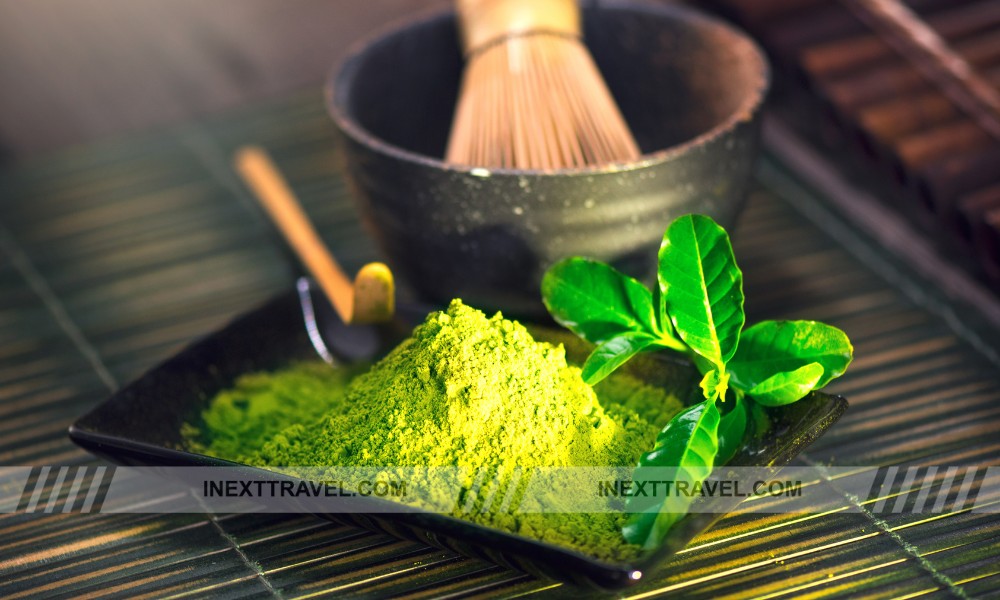
These ceremonies vary from informal gatherings to elaborate affairs involving full-course kaiseki meals. Still, all focus on mindfulness, aesthetics, and a deep appreciation of the moment, reflecting a core aspect of Japanese philosophy.
Beyond the tea ceremony, Matcha has become incredibly versatile in modern cuisine, finding its way into various culinary delights. It is used to flavor and color everything from lattes and smoothies to cakes, ice cream, and chocolates.
This adaptability has led to a global surge in Matcha’s popularity, embraced by chefs and food enthusiasts worldwide for its unique taste and health benefits.
Matcha’s health benefits are as impressive as its cultural significance. It is rich in antioxidants, particularly catechins, and is known for its cancer-fighting properties, ability to enhance heart health, and metabolism-boosting abilities.
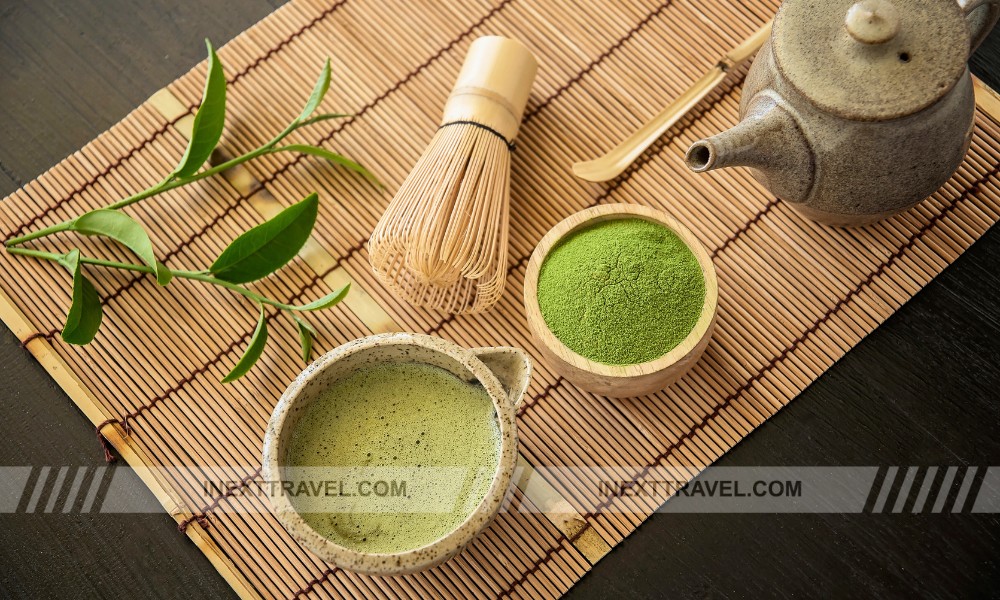
Furthermore, Matcha provides a more balanced energy boost than coffee, thanks to its combination of natural caffeine and L-theanine, which promotes alertness without the jitteriness of other caffeinated drinks.
In conclusion, Matcha is not just Japan’s number one traditional beverage but a cultural treasure representing Japanese traditions’ artistry, tranquility, and health-consciousness. Whether enjoyed in a serene tea ceremony, as a comforting warm drink, or as a vibrant ingredient in desserts, Matcha remains a cherished symbol of Japanese heritage and a testament to the enduring appeal of Japan’s rich culinary arts.
Conclusion
As we wrap up our exploration of Japan’s ten most popular foods, it’s clear that Japanese cuisine offers an extraordinary range of flavors, textures, and culinary techniques that reflect the country’s rich cultural heritage.
From the complex layers of a steaming bowl of Ramen to the subtle elegance of Matcha, each dish we’ve explored is deeply embedded in Japan’s daily life and traditions.
These culinary staples are more than just meals; they are expressions of history, artistry, and regional diversity, celebrated nationwide in homes, street corners, and fine dining establishments.
They invite both locals and visitors to experience the communal spirit and profound craftsmanship that Japanese cuisine is known for.
We hope this journey through Japan’s most beloved dishes has inspired you to explore these flavors in your kitchen or perhaps plan a culinary adventure to Japan itself.
Each bite offers a taste of Japan’s culinary excellence and a deeper appreciation for a culture that elevates food to an art form.
So, whether you’re enjoying a crispy Tempura, a flavorful slice of Sushi, or a warm sip of Miso Soup, remember that you’re partaking in a rich, ongoing culinary story that continues to evolve and enchant at every turn.